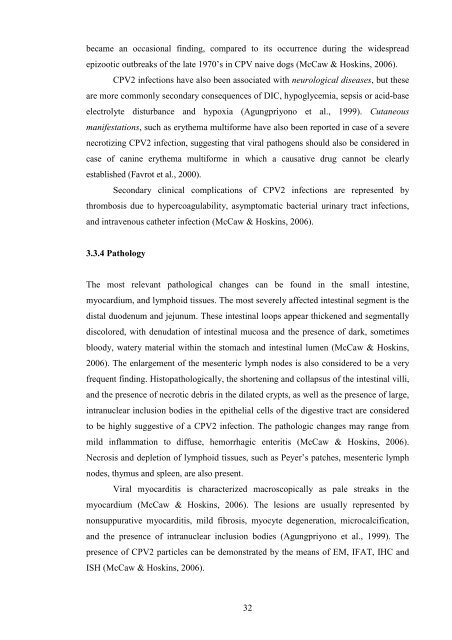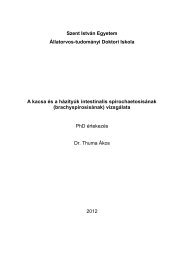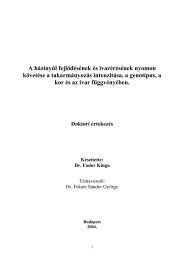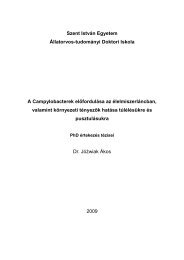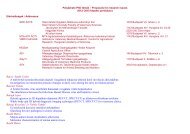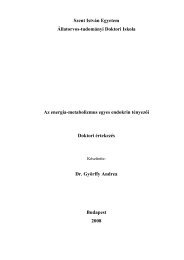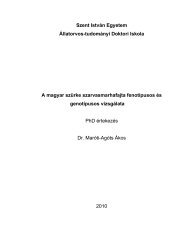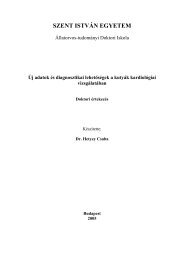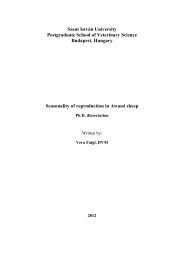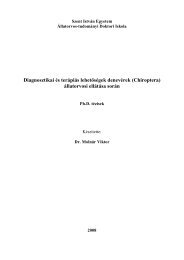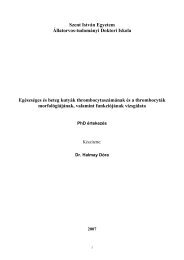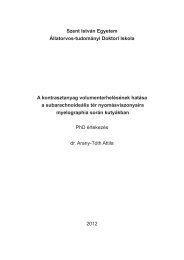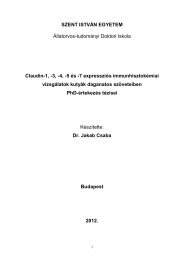PhD Thesis Demeter Zoltan
PhD Thesis Demeter Zoltan
PhD Thesis Demeter Zoltan
Create successful ePaper yourself
Turn your PDF publications into a flip-book with our unique Google optimized e-Paper software.
ecame an occasional finding, compared to its occurrence during the widespread<br />
epizootic outbreaks of the late 1970’s in CPV naive dogs (McCaw & Hoskins, 2006).<br />
CPV2 infections have also been associated with neurological diseases, but these<br />
are more commonly secondary consequences of DIC, hypoglycemia, sepsis or acid-base<br />
electrolyte disturbance and hypoxia (Agungpriyono et al., 1999). Cutaneous<br />
manifestations, such as erythema multiforme have also been reported in case of a severe<br />
necrotizing CPV2 infection, suggesting that viral pathogens should also be considered in<br />
case of canine erythema multiforme in which a causative drug cannot be clearly<br />
established (Favrot et al., 2000).<br />
Secondary clinical complications of CPV2 infections are represented by<br />
thrombosis due to hypercoagulability, asymptomatic bacterial urinary tract infections,<br />
and intravenous catheter infection (McCaw & Hoskins, 2006).<br />
3.3.4 Pathology<br />
The most relevant pathological changes can be found in the small intestine,<br />
myocardium, and lymphoid tissues. The most severely affected intestinal segment is the<br />
distal duodenum and jejunum. These intestinal loops appear thickened and segmentally<br />
discolored, with denudation of intestinal mucosa and the presence of dark, sometimes<br />
bloody, watery material within the stomach and intestinal lumen (McCaw & Hoskins,<br />
2006). The enlargement of the mesenteric lymph nodes is also considered to be a very<br />
frequent finding. Histopathologically, the shortening and collapsus of the intestinal villi,<br />
and the presence of necrotic debris in the dilated crypts, as well as the presence of large,<br />
intranuclear inclusion bodies in the epithelial cells of the digestive tract are considered<br />
to be highly suggestive of a CPV2 infection. The pathologic changes may range from<br />
mild inflammation to diffuse, hemorrhagic enteritis (McCaw & Hoskins, 2006).<br />
Necrosis and depletion of lymphoid tissues, such as Peyer’s patches, mesenteric lymph<br />
nodes, thymus and spleen, are also present.<br />
Viral myocarditis is characterized macroscopically as pale streaks in the<br />
myocardium (McCaw & Hoskins, 2006). The lesions are usually represented by<br />
nonsuppurative myocarditis, mild fibrosis, myocyte degeneration, microcalcification,<br />
and the presence of intranuclear inclusion bodies (Agungpriyono et al., 1999). The<br />
presence of CPV2 particles can be demonstrated by the means of EM, IFAT, IHC and<br />
ISH (McCaw & Hoskins, 2006).<br />
32


